On The Way: The Daily Zen Journal
Since I Became a Buddha – Part 2
Song-chol (1912-1993)
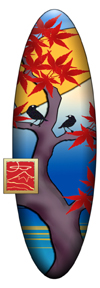
The past, present, and future are all eternally abiding, and so everything is non-producing, non-extinguishing. Call it whatever you want—the Pure Land Paradise, the Sea of Garlands, the Inexhaustible Dharma. But the Buddha speaks the Dharma through the past, the present, and the future, eternally.
Are we talking about the historical Buddha Shakyamuni? No, of course not. We are talking about everything in the universe, past, present, and future as well as about every place in the universe.
Everything speaks of the inexhaustible Dharma through the past, the present, and the future, eternally. Everything speaks of the inexhaustible Dharma, and everything is in inexhaustible transformation.
Even the boulder at the top of a peak is constantly speaking of this in a manner hundreds of times greater than the Buddha in the Buddha Hall. You may think it sounds funny to say that a boulder speaks the Dharma. What could the boulder possibly be saying?
But when you open the Eye of the Mind, you are also opening the Ear of the Mind. And you will be able to hear the inexhaustible Dharma explanations of the boulder, which seems to be just sitting there. In Buddhism, this is called “inanimate Dharma talk.”
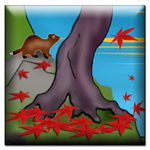
Animate things can move and make noise, so you may regard them as having the potential of expounding the Dharma. But an inanimate rock, a boulder, a handful of earth—none of these moves or speaks, so you wonder how they could speak of the Dharma.
If you come to understand Buddhism, however, you will come to listen to the boulder which expounds the eternal Dharma. Even all that which is invisible speaks incessantly of the Dharma.
So you see, everything in the universe speaks of the Dharma. Everything is in itself a Sutra; everything is a dimension of the Dharma. You have to understand this to understand Buddhism. And then you realize how futile it is to try to teach others, to try to “save” others.
So you have only to discover that the basis of everything, your original face, the fundamental landscape, is the Pure Land, a Buddhafield, paradise. If you come to realize this Truth, then your search is over. There is nothing else to look for.

Some people misunderstand the implications of this, however. They think, “What a wonderful law. We all live in paradise, and we’re all Buddha. So there’s nothing to do. We don’t have to study, or work, or make progress. We can do anything we want, can’t we?”
That is perhaps an initial reaction, but it is the result of a lack of true understanding. Yes, we’re fundamentally Buddha, we live in paradise, and the Great Light brightens the entire universe.
But people with their Eye closed still can’t see the Light. You are fundamentally Buddha, but if your Eye is closed, there is only darkness.
Think of a mirror covered with dust. The mirror itself is clean and clear, and it reflects light. But once covered with dust, it reflects nothing. The fact that a dust-covered mirror cannot reflect anything is itself a wonder.
To say that you are Buddha is not enough. It’s wrong to think that since you are Buddha, you live in paradise and therefore there’s nothing more to do. To think that there’s no need to open the Eye means that you’ll be a blind Buddha forever.
So you have to have confidence in one thing. Even if we are sitting here in the darkness with our Eye closed and unable to see the Great Light, we must move forth with the confidence that we are living in the Great Light and that if we strive hard enough, we will be able to see the Great Light.
No, you may not be able to become as perfect as the Buddha in this life, and you may not be able to see paradise all around you. But you must have the confidence that you are fundamentally Buddha, and that you do in fact live in paradise. The only flaw is that you haven’t opened the Eye and haven’t seen the Light.
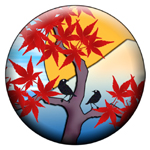
If you become aware of the fact that you are surrounded on all sides by the Great Light, and if you open the Eye, then the great Light is yours. Present reality is absolute. It is non-producing and non-extinguishing. And as I said before, Buddhism has the exclusive copyright on these words.
The fundamental nature of humanity is astoundingly great. It goes back fathomless time periods, and it is immortal. It is only because we have not opened the Eye that we cannot see this.
You may be saying to yourself something like, “What is this monk talking about? My eyes are wide open, they’re as clear and bright as day itself, and he’s telling me I’m blind. What’s going on here?”
But you’re talking about the visual sensation from your eyes. And you may have great eyesight, good enough to see the eye of a needle in the dark. But those eyes are of no use. What I’m saying is that you have to open your Internal Eye, your Eye of Wisdom, your Eye of Intuition, the Eye of the Mind.
I’m talking about opening this Eye so that you can see the Great Light pervading everything evenly throughout the universe. I’m talking about a perfectly clean mirror that reflects everything quietly, very, very quietly.
How can you clean the mirror of dust? How can you open the Eye? The easiest and fastest way is through meditation and through the use of a koan. And if you make the breakthrough with your koan, the Eye of the Mind will open up. It will sparkle and glimmer. There is a saying that if you try really hard once, you’ll even surpass the level of the Buddha, that your Eye will open.

Yet there is another method of opening the Eye. Something is covering the Eye, just as dust covers the mirror. If you discover what that something is, and remove it, then you’ll be able to see, won’t you?
Song-chol (1912-1993)
Excerpted from Echoes on Mt. Kaya – Selections on Korean Buddhism
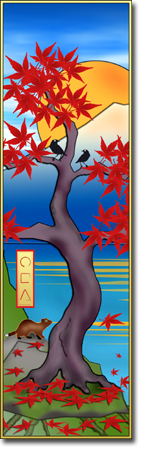

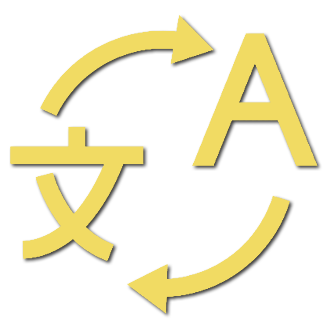
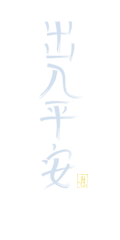
So you have to have confidence in one thing. Even if we are sitting here in the darkness with our Eye closed and unable to see the Great Light, we must move forth with the confidence that we are living in the Great Light…
The sheer beauty and simplicity of this piece speak for itself. Especially now when the times seem so extreme, and we are over stimulated to react, to be able to pause and remember to practice always returns us to center. Whether it is a sense of the breath, our posture, an image that inspires us, or a simple phrase, there is a strength that endures here.
The teaching of inanimate objects of nature may feel like quite a stretch for many of us, but it is a koan for anyone who has wanted to learn directly from Nature. This wordless transmission requires a different approach to learning.
Dogen’s writing clarifies this further: “Insentient beings do not necessarily speak dharma with a voice heard by the ears.”
This leaves us with an open-ended invitation to explore the teachings of inanimate beings, but no roadmap to get there. One thing is certain: we’ll need to cultivate a new way to hear and see—one that involves slowing down enough to experience these beings on a subtler level.
It is similar to traveling to a new country where you don’t speak the language or understand the culture. What tools will be most helpful to break through our conventional ways of seeing inanimate beings? This opens us to a radically different way of perception, and one that requires patience and receptivity.
Once the barrier is crossed, there is no need for interpretation from another. It is true direct perception with no intermediaries needed, and a path seldom taken.
“Something hidden. Go and find it.
Go and look behind the Ranges
Something lost behind the Ranges.
Lost and waiting for you. Go!”
―Rudyard Kipling
Seeking connection,
Elana, Scribe for Daily Zen